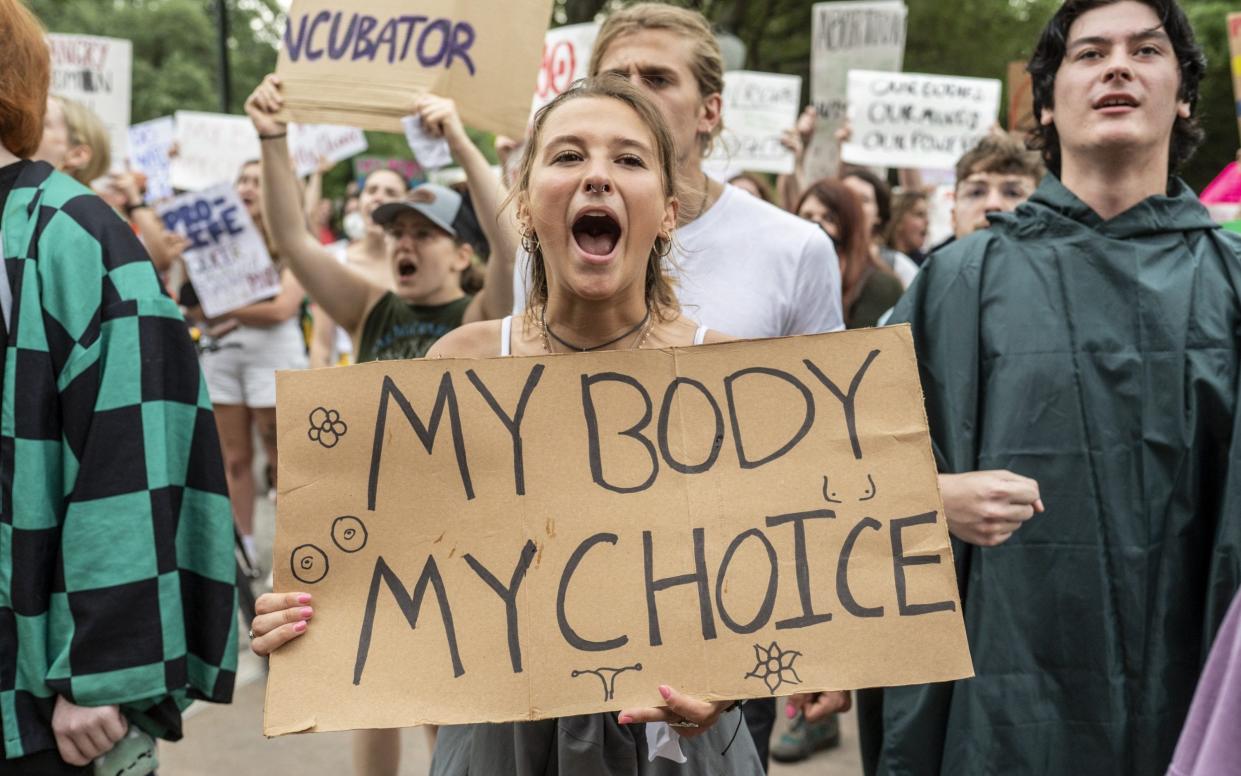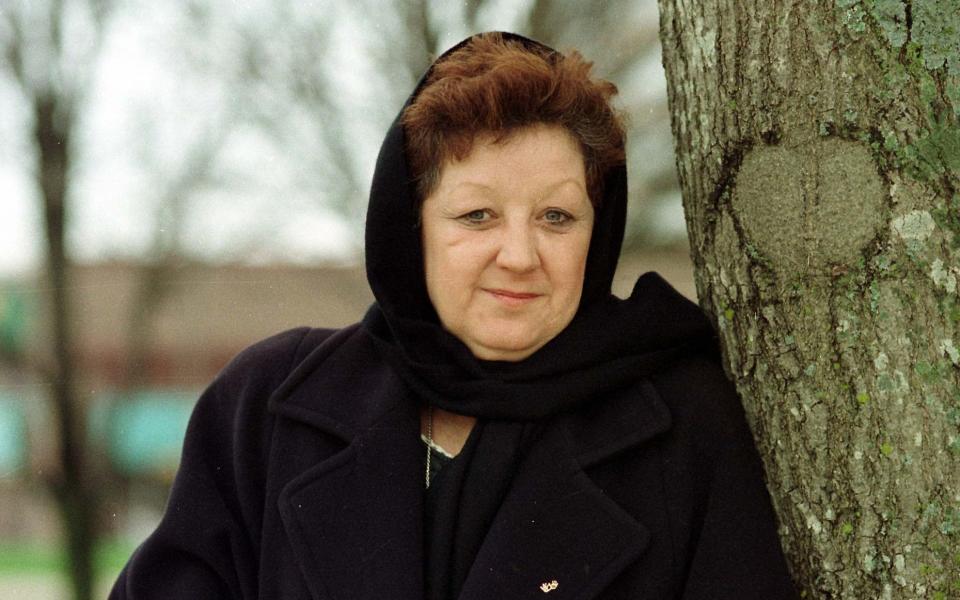America’s abortion debate is a chilling reminder of how history can be rewritten at a stroke

Last week, the newsmagazine Politico leaked a first draft of a United States Supreme Court opinion that could see the end of Roe v Wade, the landmark 1973 decision that protects a pregnant American woman’s liberty to choose to have an abortion. If overturned, termination in the US would be left to individual states to decide – and ultimately, could even be banned completely as fetal rights trumped women’s rights under a radical interpretation of constitutional law.
The news sent shockwaves around the world, although US court watchers had seen it coming. In December, the Court heard argument in a Mississippi case concerning the criminalisation of abortion at just 15 weeks. And, when in office, Donald Trump put three new ultra-conservative justices on the Supreme Court, promising that they would be pro-life – and undo Roe v Wade. Few guessed, however, that the Court would move so quickly – or be so unapologetic about doing so.
The draft opinion concludes that Roe was “egregiously wrong,”: as bad as a 19th-century decision, Plessy v Ferguson, that upheld racial segregation. Justice Samuel Alito writes in it that there can be no abortion right because of originalism, the interpretive method adopted by the Court’s conservatives. In this interpretation of US law, the original public meaning of the constitution is the framework through which everything must be decided – and when the Fourteenth Amendment – which states that “nor shall any State deprive any person of life, liberty, or property, without due process of law” – was ratified, nobody seriously argued that abortion was a constitutional right.
The details of the opinion may shift between now and the release of a final decision by late June. The Supreme Court often goes through as many as 20 drafts before releasing a final decision. But the fundamentals seem unlikely to change. If anything, the leak will make it harder for any conservative justice to rethink her vote – such a move would be framed by the American Right as caving to political pressure. There are at least five justices who are ready to say that Roe was wrongly decided and, in less than two months’ time, the national right to abortion in the United States will be a thing of the past. Somewhere between 20 and 26 states are poised to criminalise most abortions as soon as Roe is gone. Louisiana is advancing a bill that would punish women for homicide when they terminate a pregnancy.
*******
The demise of Roe raises a familiar question: why is the abortion debate in the United States so uniquely polarised?
In Canada and countries across Europe, legal abortion does not produce the kind of deep division obvious in the United States. This polarisation is especially striking when much of the world seems to be moving in the direction of legalising abortion – nations from Mexico, Columbia, and Argentina to South Korea and Thailand have loosened their rules as the United States moves in the opposite direction. It’s easy to dismiss what is happening in the United States as something that could and will not happen elsewhere. But the history of this debate tells a much more complex story.
Many believe the polarisation of the American abortion debate is due to religion. And it is true that, by most measures, the United States is more religious than Europe, with more Americans attending church and professing belief in God. The presence of a bloc of white evangelical Protestants, many of whom oppose abortion, across the American South and Midwest has provided crucial support for the antiabortion movement.
But religion alone is not enough of an explanation. Catholics, who launched the pro-life movement, are divided in their views on abortion. Black churches have often moved in the direction of supporting abortion rights. The best predictor of attitudes about abortion is often not religiosity – or how devout someone is – but partisan affiliation.
And the United States is in the middle of a likely-irreversible shift toward secularism. As recently as 2004, a Gallup poll found that 85 per cent of Americans identified as Christian. By 2021, that number had plummeted to 63 per cent and the decline shows no signs of slowing down. Between 2006 and 2021, white evangelical Protestants’ share of the population has declined 37 per cent. Younger Americans are far more likely to be secular – 40 per cent of millennials in Gallup’s poll identified as nonbelievers or had no religious preference. And yet Americans are not becoming less divided over abortion as the influence of religion wanes.
*******
Perhaps we can chalk up the intensity of the abortion conflict to Roe itself. In 1973, the Court declared a right to choose abortion and struck down most of the state laws then on the books. There is no doubt that the decision helped to nationalise the anti-abortion movement and gave conservatives an easy target. Control Congress and the White House, right-to-lifers promised, and conservatives could control the Supreme Court.
Undoing Roe seemed possible, and donors and activists rushed to achieve that goal. And medical changes, such as the availability of ultrasound technology and the improvement of care for premature births, created a new vulnerability. Roe recognised a right to choose abortion until viability – the point at which a foetus could survive outside the womb – but medical advances mean the date of viability has moved to earlier in pregnancy. The more fluid viability became, the more easily anti-abortion groups could attack Roe as an arbitrary and unfair decision.

But Roe is only one of the reasons debate in the United States has become so bitter. In fact, abortion politics became divisive well before 1973.
Until the late 19th century, most states did not prosecute doctors for abortion before quickening, the point at which foetal movement could be detected. Starting in the mid-19th century, the American Medical Association led a campaign to criminalise abortion early as well as late in pregnancy. These doctors argued for protection for foetal life but also stressed the importance of ensuring that the “right” women – generally those from Anglo-Saxon countries had more children while immigrants had fewer.
By the end of the 19th century, most states had criminalised abortion. The fight escalated in the Sixties when states began loosening restrictions. An anti-abortion movement mobilised in response, initially in Catholic communities. That movement rejected compromise legislation allowing abortion in cases of rape, incest, foetal abnormalities and health. Supporters of abortion access thought the compromise laws did not go far enough, especially because low-income Americans lacked access to abortion. The two sides waged a bitter state-by-state conflict. National politicians took note – Richard Nixon tried to use abortion to doom his Democratic challenger, George McGovern, in 1972.
And the reasons for polarisation continued well after 1973. Immediately after Roe, neither party staked out a clear position. Prominent Democrats, including Joe Biden, cast anti-abortion votes. Republicans like Nelson Rockefeller, who served as vice president under Gerald Ford, were among the most prominent supporters of abortion rights. Ronald Reagan, the conservative icon, even signed abortion reform into law in 1967 when he was governor of California.
It was ironic, then, that Reagan was the one who made abortion into a major election issue. Before 1980, blue collar voters had sided with the Democrats for economic reasons, but Reagan’s handlers bet that they could win over voters uncomfortable with abortion, especially white evangelical Protestants, who had just begun to transform the anti-abortion movement. In turn, as women and people of colour gained influence in the Democratic Party, that party expressed stronger support for abortion rights.

Public opinion on abortion barely budged – Americans still favoured restrictions but not bans and wanted abortion to be legal, especially early in pregnancy. But both parties began to cater not to the largest number of voters but to those with the most strongly held views. This created a vicious cycle of polarisation. Politicians echoed the arguments of social movement that had mobilised for and against abortion access in return for the loyalty and donations of single-issue voters. Single-issue voters, in turn, came to expect more of leaders who promised that a movement’s principles would be written into American law.
Parties’ positions reflected the work of unusually effective movements for – and especially against – abortion rights. Since the Seventies, the US anti-abortion movement has perfected techniques that have been exported across the world. After the Supreme Court decided Roe, the movement initially campaigned for a constitutional amendment banning abortion. But by 1983, that campaign had flamed out, and the movement had identified an alternative: control of the Supreme Court.
By aligning with the Republican Party, the anti-abortion movement could influence who selected and voted on Supreme Court nominees. With conservative judges on the bench, the Court might reverse Roe and perhaps go even further, suggesting that abortion itself is unconstitutional.
To achieve this goal, the anti-abortion movement mastered new skills – major national marches, slick media campaigns, online petitions and a long-term campaign to deregulate election spending and allow donors to anonymously funnel massive sums into national contests. Organisations like Human Life International have trained anti-abortion activists across the world.
*******
The success of the US anti-abortion movement in polarising the conflict is not just the result of strategic savvy. The movement has benefited from larger shifts in US political geography and partisanship. Before Roe v Wade, the anti-abortion movement was the strongest in states like Pennsylvania, New York and Minnesota. Republicans were weak politically in the South, which still pledged its fidelity to the so-called Dixiecrats, who had long defended racial segregation.
But the movement’s centre of power has shifted south. Now, Democrats have no realistic chance of winning in most Southern states, which are home to solid and increasingly uncompromising anti-abortion majorities. Even Republican voters uncomfortable with abortion bans are unlikely to change how they cast their ballots. That’s partly because of negative partisanship – the hatred of leaders and even voters from the opposite party, which has risen exponentially since the Eighties. The more antipathy voters have for the opposition, the more willing they are to vote for extreme candidates –and to set aside their concerns about sweeping criminal abortion bans. For example, the most recent data we have suggest that a majority of voters in Oklahoma favour abortion being legal under all or most circumstances. And yet that state has passed an abortion ban with no debate.
Republicans in state races in places like Oklahoma worry more about conservative primary challengers than about losing a general election. That incentivises conservative politicians to veer to the extremes on abortion to energise primary voters and win over donors. These states supply the anti-abortion movement with a solid base of financial and political support. They have also generated an endless supply of test cases for a conservative Court set on undoing abortion rights.
A fractured media environment has fuelled polarisation too. Americans have disagreed about the morality and legality of abortion since the Sixties. But since the Nineties, the pro-life and pro-choice movements have also disagreed on what abortion in America is really like. Anti-abortion groups field their own experts, collect their own data and rely almost exclusively on conservative media for information about how abortion affects communities, families and people who are pregnant. This divide is not just visible on abortion – it has spilled over into debates about everything from climate change to the efficacy of masks. But the more Americans live into alternative factual worlds, the more divided the nation has become on abortion.
The reversal of Roe may seem like the end of a struggle, but the opposite is true. The anti-abortion movement did not organise to undo Roe. Its goal has been a nationwide ban on abortion – one that would apply in progressive as well as conservative states. Anti-abortion groups have signalled that they will continue this fight. Republicans have floated plans to pass a national ban on abortion if they retake Congress and the White House. Anti-abortion groups have already laid out plans to convince the Supreme Court that abortion is unconstitutional.
Roe held that the Fourteenth Amendment recognises a right to privacy broad enough to encompass the abortion decision. Abortion opponents, by contrast, argue that the word “person” in the Fourteenth Amendment applies before and after birth. That would mean that before birth, there are rights to due process and equal protection of the law – and abortion itself is unconstitutional, whichever state you live in.
This argument is not entirely convincing. Even if one accepts that the nature of constitutional rights should depend on what legislators thought at a time before women could vote, there is little evidence that anyone thought abortion was unconstitutional in the 19th century and no one expects the Supreme Court to act on this argument immediately. But the emphasis in the leaked draft on the unique value of foetal life will intensify efforts to ban abortion coast to coast. If this language is in the final opinion, the issue will be far, far out of the hands of voters in all states for a very long time to come.
Those across the Atlantic like to tell themselves that this is a story about the United States, a nation that has witnessed an insurrection at the US Capitol and a sustained effort to overturn the 2020 election. Surely, we tell ourselves, such a thing could not happen in the United Kingdom or in much of Europe. But until days ago, many Americans did not believe such a thing could happen here – and now the end of Roe is all but guaranteed.
Mary Ziegler is the Stearns Weaver Miller professor at Florida State University


